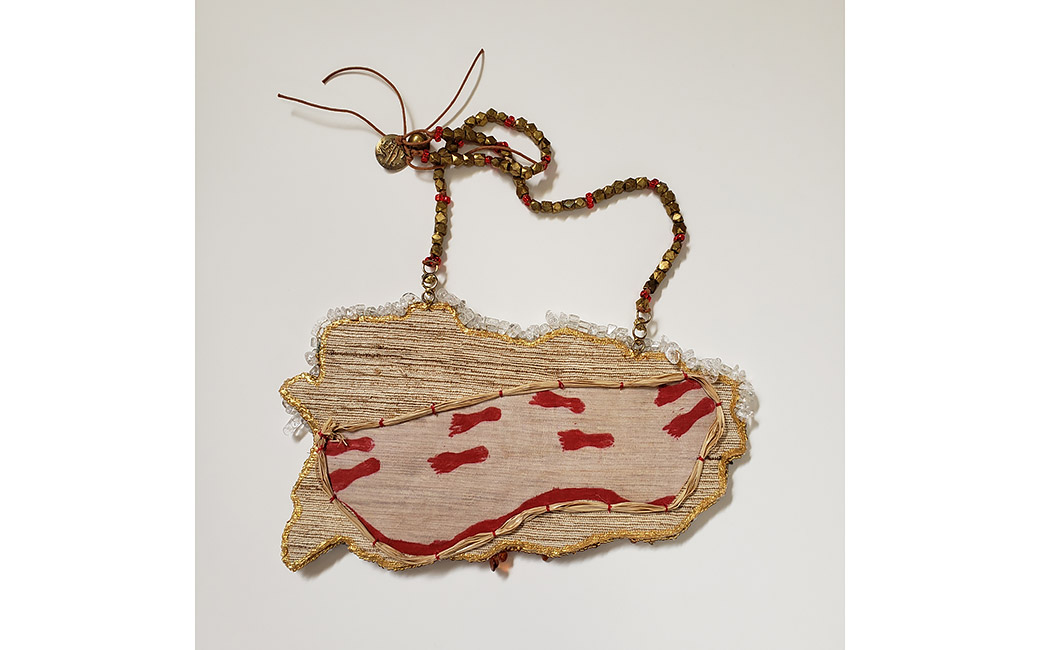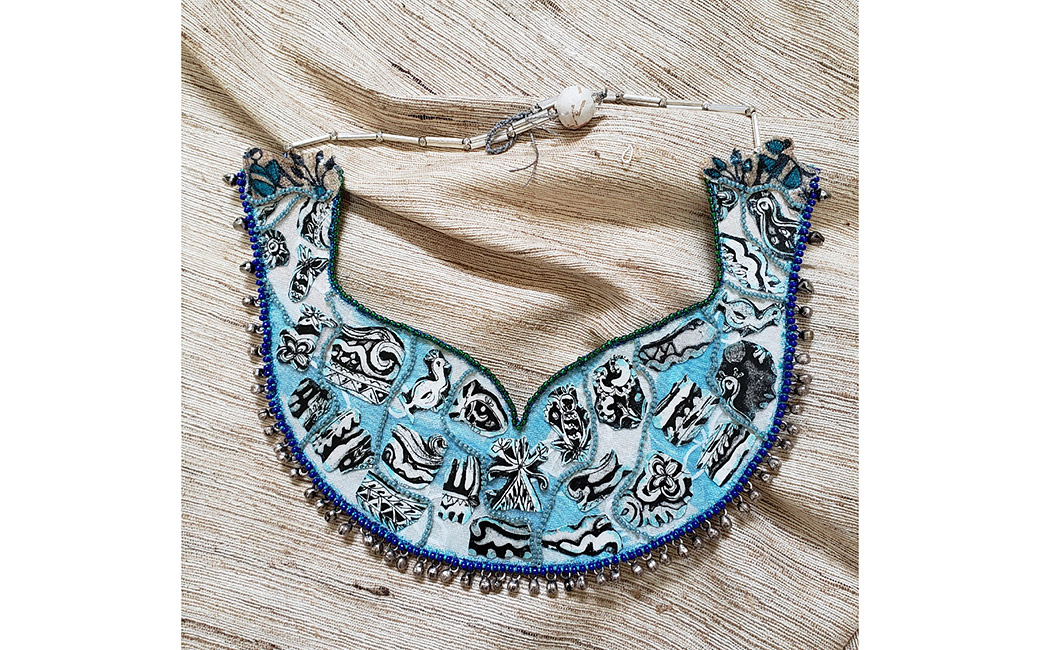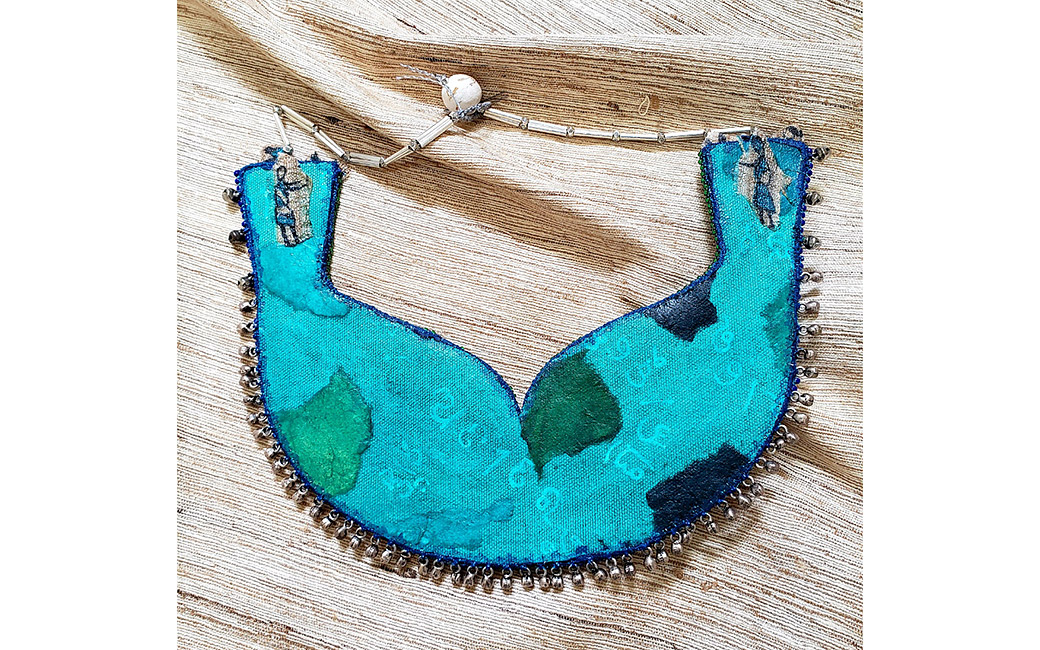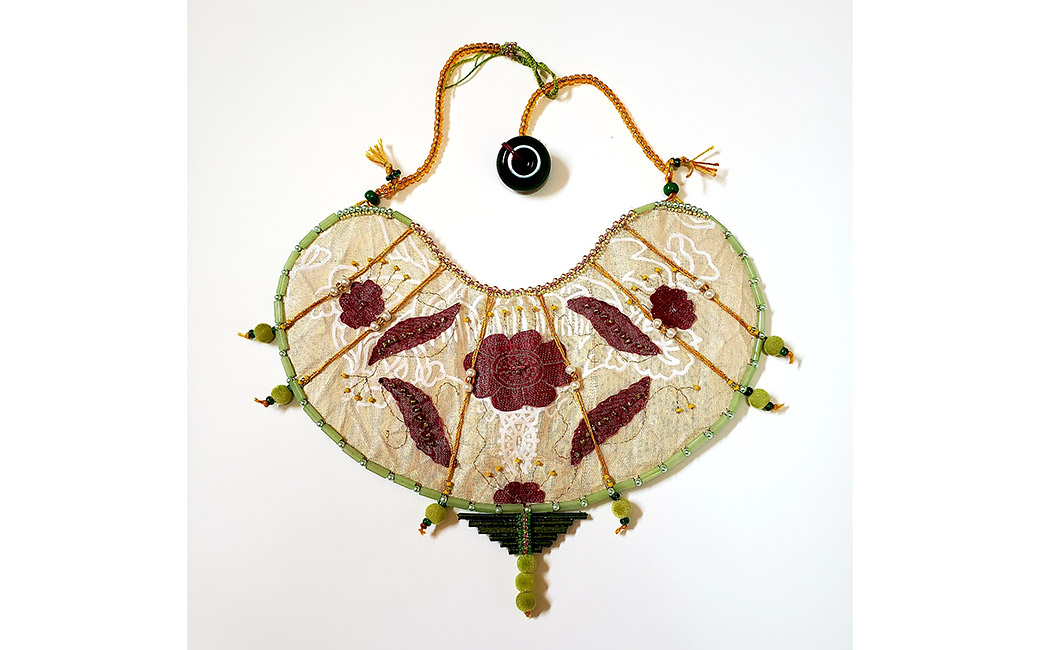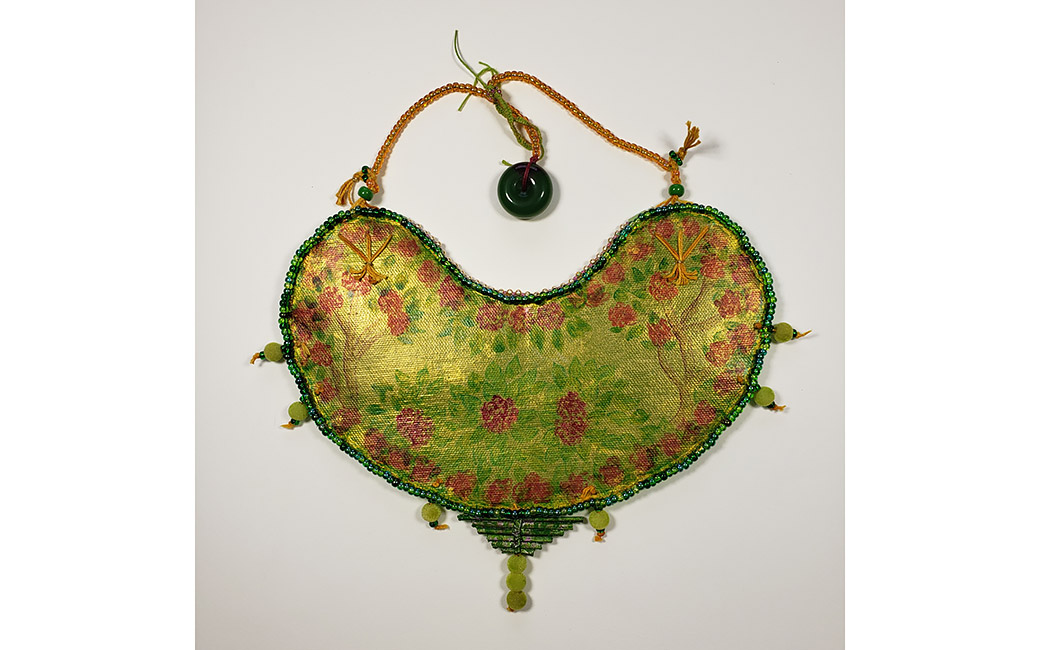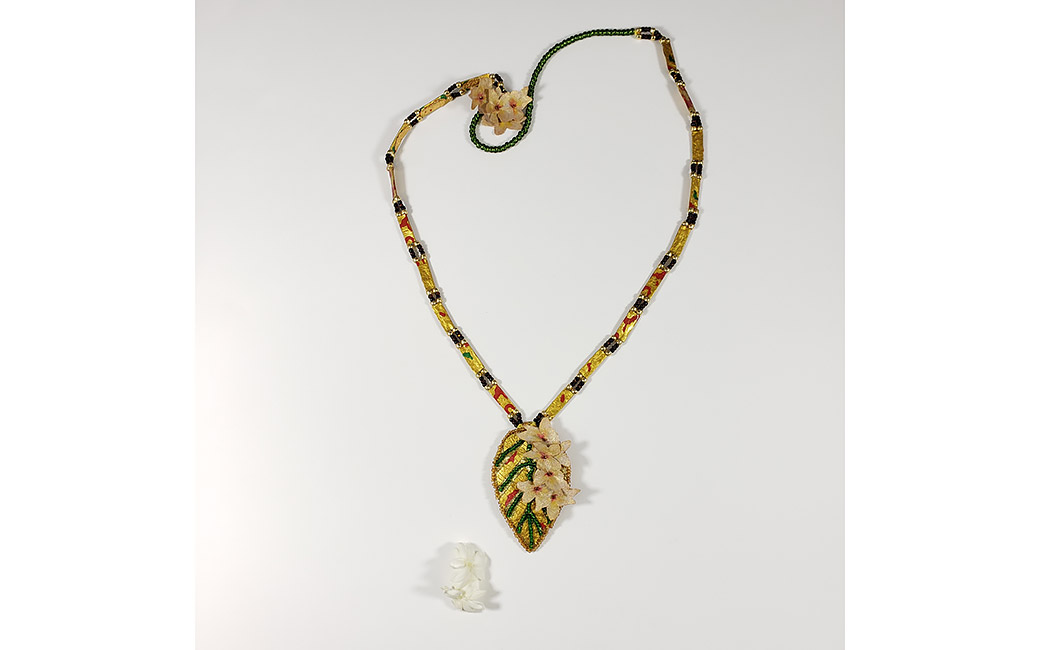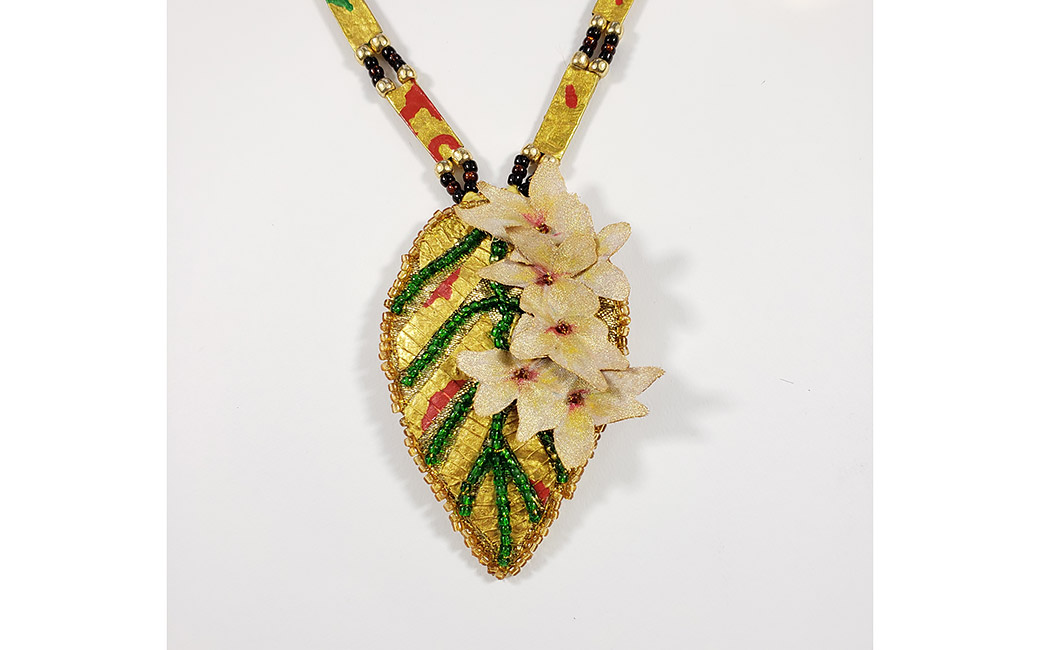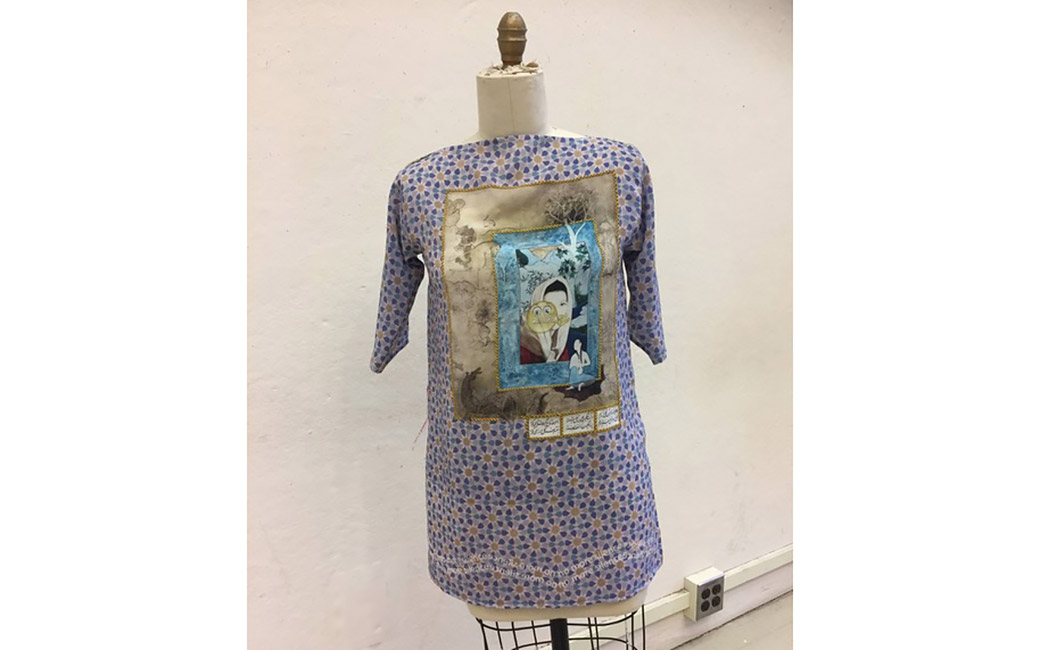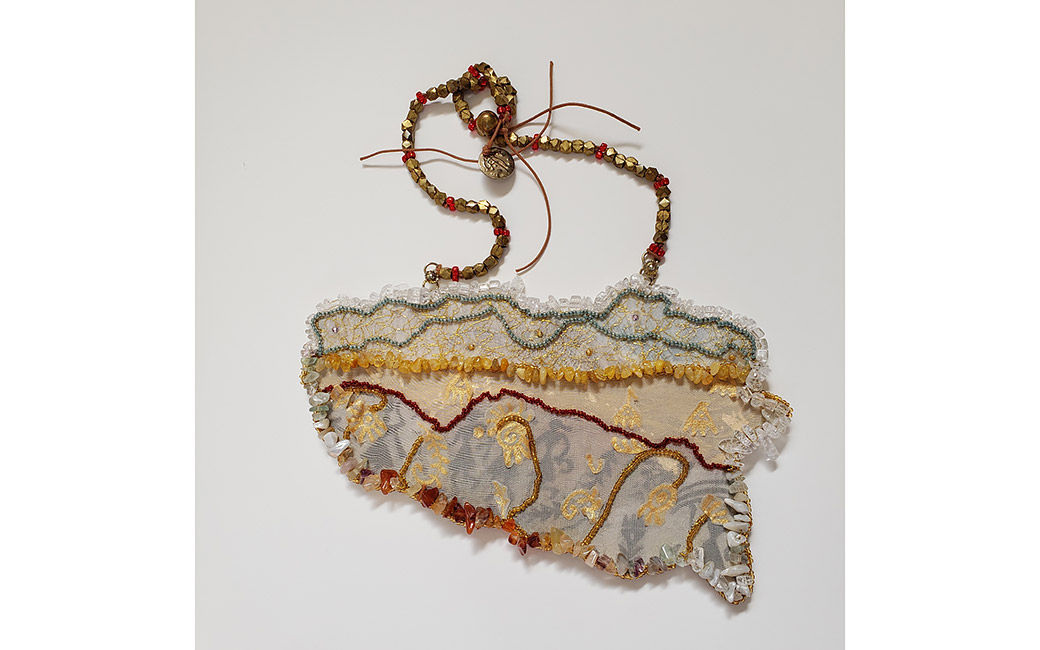
Climate & Gender Equity
The following artists depict and express their concerns about environmental, gender and economic injustices.
Anu Das
Basti Raman: Adapting in Altered Landscapes: This necklace is about climate extremes and the inequities women are confronted with in this already impoverished region of Dera Ghazi Khan (a district in Punjab Province). This is also a region where my grandmother migrated from in 1947 and a region I would like to visit someday!
Migrants: Adapting in Vulnerable Landscapes: This necklace is dedicated to the people of Satabhaya, a village in the Mahanadi Delta, India. Deltas have a history of being vulnerable due to the rising sea levels and flooding. But, the devastation of the Satabhaya coastline in the Mahanadi Delta is like no other. The region’s villagers are India’s first “climate refugees.” I drew inspiration from the Odia film Kalira Atita (Yesterday’s Past), by Indian film producer/director Nila Madhab Panda, based on Satabhaya and the impact of climate change in this region.
Resilience: Surviving in Altered Landscapes: Climate change in the Himalayas, especially in the mountainous areas, has left indigenous communities highly vulnerable. I have dedicated this necklace to these communities! “Forests are like our parents. We revere and worship them. We get resources to meet our social, economic and environmental needs. We worship forests as our mother on Janai Purnima, a full moon day in mid-August. The lake above the three villages is called Ama Chedingmo, meaning ‘our mother’ in our language.”—Excerpt from “Climate change, gendered vulnerabilities and resilience in high mountain communities” (Engendering Climate Change: Learnings from S. Asia)–Deepak Dorje Tamang and Pranita Bhushan Udas.
Cauvery Jasmine: I have dedicated this necklace to the women of the Cauvery Basin in Southern India who have also been impacted by the effects of the fast changing climate. These women have to make tough choices to sustain their families which not only affects them financially but also emotionally. This necklace symbolizes the gold ornaments, a “strongly gendered asset in the region,” only to be pawned for their sustenance. Inspired by Wells and well-being in South India, Divya, Susan Solomon and Nitya Rao.
Anu Das received a BFA from the Mason Gross School of the Arts, Rutgers University, and has exhibited her works at venues throughout the Northeast and Mid-Atlantic regions. She draws inspiration from scholars and researchers dedicated to the issues of climate change affecting South Asia in their book, Engendering Climate Change: Learnings from South Asia, edited by Asha Hans, Nitya Rao, Anjal Prakash and Amrita Patel.
Learn More about Anu Das
Sughra Hussainy
I made this while I was in fiber class at MICA. I printed an image of my artwork, The Reflection in the Mirror, on a fabric with a symmetrical geometric design to represent equality between men and women. The print depicts a scene from the Persian story Khosrow and Shirin. A prince on horseback gazes at Shirin while she bathes by moonlight as if she is nothing but an object. I painted Shirin as a self-portrait to show how gender inequities persist today. I also painted an emoji with the mouth zipped shut, because I don’t have a voice—despite new technologies that are supposed to make our lives so much easier. I created a border around the painting to create a safe space for the princess. A tree that is half inside the border symbolizes the power of women. At the bottom of this artwork is a horse. I wish to show that horse, like time, can go fast and women should get up and go with it. “Don’t be silent anymore, stand strong and make your life and your future however you want.” The poetry beneath the painting reads: “You are part of this world. Your roots show your originality. You are very strong.”
Sughra Hussainy is trained in traditional Afghan and Islamic styles of art including miniature paintings, calligraphy, and illumination. Through her art, Hussainy speaks and encourages viewers to break down the preconceived ideas that enforce the boundaries between people and keep others’ voices silent. Hussainy’s medium is one of silent but eloquent expression, and also a call to action—to listen with our eyes—and a plea to discern, and to give voice and empowerment to those without. Hussainy’s life has held many challenges, but she has turned to art to guide her through each one. Art gives Hussainy a platform and a voice through which to speak. Through traditional techniques and style, Sughra Hussainy’s art speaks the language of social change, on behalf of women.
